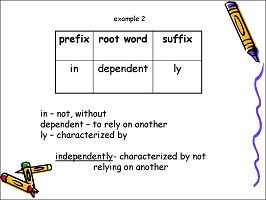What is morphological process and structure of words
Morphology
Morphology (from ancient Greek. Μορφή – “form” and λόγος – “word, teaching” ) is a section of grammar, the main object of which is the words of natural languages, their significant parts, and morphological features. The tasks of morphology include the definition of a word as a special linguistic object and a description of its internal structure. What is morphological process
Basic elements of morphology What is morphological process
Morphology studies:
THE STRUCTURE OF WORDS
- Root (lexeme)
- Inflectional morphemes:
- Nominal
- Verbal
- Derivative morphemes:
- Prefixes
- Suffixes
- Compound words
- Parasynthetic words
- Abbreviation procedures:
- Abbreviations
- Shortenings. The photos, the hyper .
- Acronyms.
- Formed by the union of two or more words: teleñeco (TV doll), docudrama (dramatic documentary).
- The acronyms that are pronounced as a word: AIDS, UFO (they end up being incorporated as words).
- Acronym.
- Symbols.
- Loans, adaptations, copies, foreign words,
Morphological processes
Morphology manuals distinguish various procedures by which morphemes are combined with each other in the context of words. It deals, on the one hand, with the bending process and, on the other, with derivation and composition . These last two are grouped under the general concept of word formation processes
Morphological processes are those that allow languages to create new words; well, because an element is added or because the internal structure of the word is modified.
- Suffixation
- Prefixation
- Composition
Suffixation
- It is a procedure or mechanism for the formation of words or new voices that consists of adding a semantic loaded particle, in this case a suffix , to an existing word to form a new one .
- The suffixation, in this case, is increased by a condition of artist that expresses in multiple performances. Of folk and popular creations. What is morphological process
-
- The first remedy that we can carry out is suffixation, that is, the inhalation of water vapor combined with essential oils.
- The suffixation in grammar is said to the procedure of expression formation by means of suffixes.
- There is suffixation in the case of the word discovery, that is, the action of discovering with the use of the suffix tion.
- The lexical formation of suffixation comes from the transitive active verb suffix and from the suffix tion that indicates effect, fact, or action.
Pre-fixation
- Unlike suffixes, they do not have their own grammatical category nor do they change the grammatical category of the lexical base to which they apply: window> contra-window They add details of meaning to the lexeme they precede.
- The same prefix can sometimes be applied to different grammatical categories: dismissed, unfavorable, discouraged; superman, super happy, overestimate. However, prefixes are usually specialized for a grammatical category, often in relation to their semantic content: mono- and mini- select nouns or denominational adjectives: mini-salary, mono-volume, mono-thematic, monosyllabic.
- Regarding the origin, they are related to Latin prepositions (sub-marine), or Greek (hypotensive), adjectives (mega-concert, pseudo-scientific) (in some cases apocopated as mini-skirt), or also quantifiers: bi-color, mono -command).
- Sometimes for the same value, we have a prefix of Latin origin (uni-, super-) and another of Greek origin (mono-, hyper).
- Some scholars equate prefixes with prepositions. Note that they sometimes coincide with prepositions from Spanish, Latin, or Greek. In addition, they coincide with this category in the rejection of derivative suffixes. However, the prefix is a lexical affix and the process in which it is involved is one of derivation and not a composition. Argument: Prefixes considered formally and functionally prepositional, such as over-flying or over-overseas, can acquire other values: supercharging, ultra-radical.
- Prefixes are different from ‘learned subjects’. Some authors speak for the seconds of ‘prefixes’. Arguments:
- a) The subjects are not limited in their position: cartograph and graphology and philosopher.
- b) The topics can receive affixes: Graph-ía, á-graph. c) The topics have an intrinsic semantic value, and not a variable one depending on the lexical base.
- Sometimes we have the same prefix and different meanings more or less close to each other: a-bring, a-moral; un-take care, un-plug.
- The combination of prefixes in Spanish is very limited: anti-extra-community, pro-immigration.
- On rare occasions, we can find two coordinated prefixes: pre and post-electoral. They are usually cases of prefixes belonging to the same lexical field, whether they are synonyms or of opposite meaning.
Composition What is morphological process
Word formation process in which two or more lexemes are joined to form a new word with a unique and constant meaning. Also included are the morphological units that are called ‘themes’ due to their differences with prefixes and suffixes:
- a) The themes can be combined with each other to give rise to words: geographer, philosopher, while affixes cannot: precision, in-nity. What is morphological process
- b) The freedom of position of the subjects with respect to affixes: telegraph, graphology.
